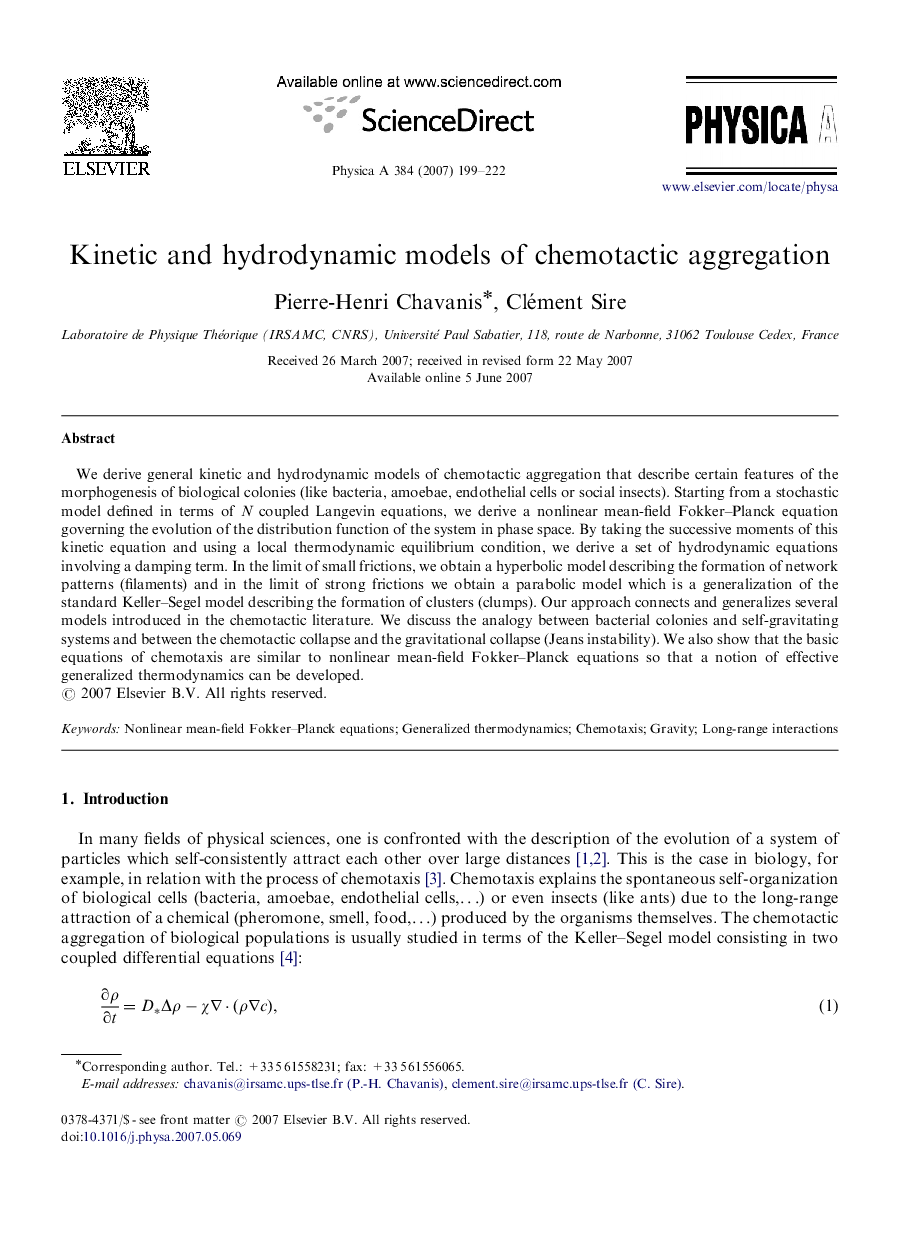| Article ID | Journal | Published Year | Pages | File Type |
|---|---|---|---|---|
| 975345 | Physica A: Statistical Mechanics and its Applications | 2007 | 24 Pages |
We derive general kinetic and hydrodynamic models of chemotactic aggregation that describe certain features of the morphogenesis of biological colonies (like bacteria, amoebae, endothelial cells or social insects). Starting from a stochastic model defined in terms of N coupled Langevin equations, we derive a nonlinear mean-field Fokker–Planck equation governing the evolution of the distribution function of the system in phase space. By taking the successive moments of this kinetic equation and using a local thermodynamic equilibrium condition, we derive a set of hydrodynamic equations involving a damping term. In the limit of small frictions, we obtain a hyperbolic model describing the formation of network patterns (filaments) and in the limit of strong frictions we obtain a parabolic model which is a generalization of the standard Keller–Segel model describing the formation of clusters (clumps). Our approach connects and generalizes several models introduced in the chemotactic literature. We discuss the analogy between bacterial colonies and self-gravitating systems and between the chemotactic collapse and the gravitational collapse (Jeans instability). We also show that the basic equations of chemotaxis are similar to nonlinear mean-field Fokker–Planck equations so that a notion of effective generalized thermodynamics can be developed.
